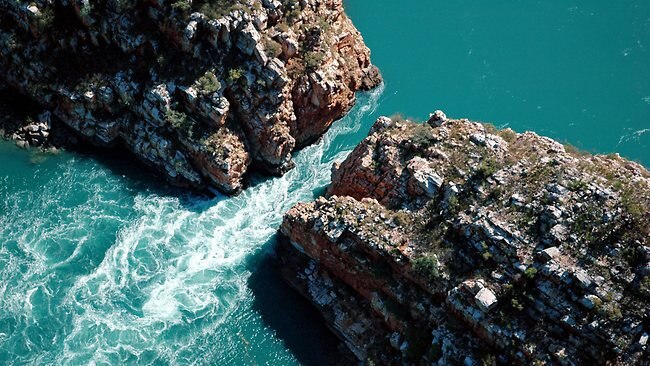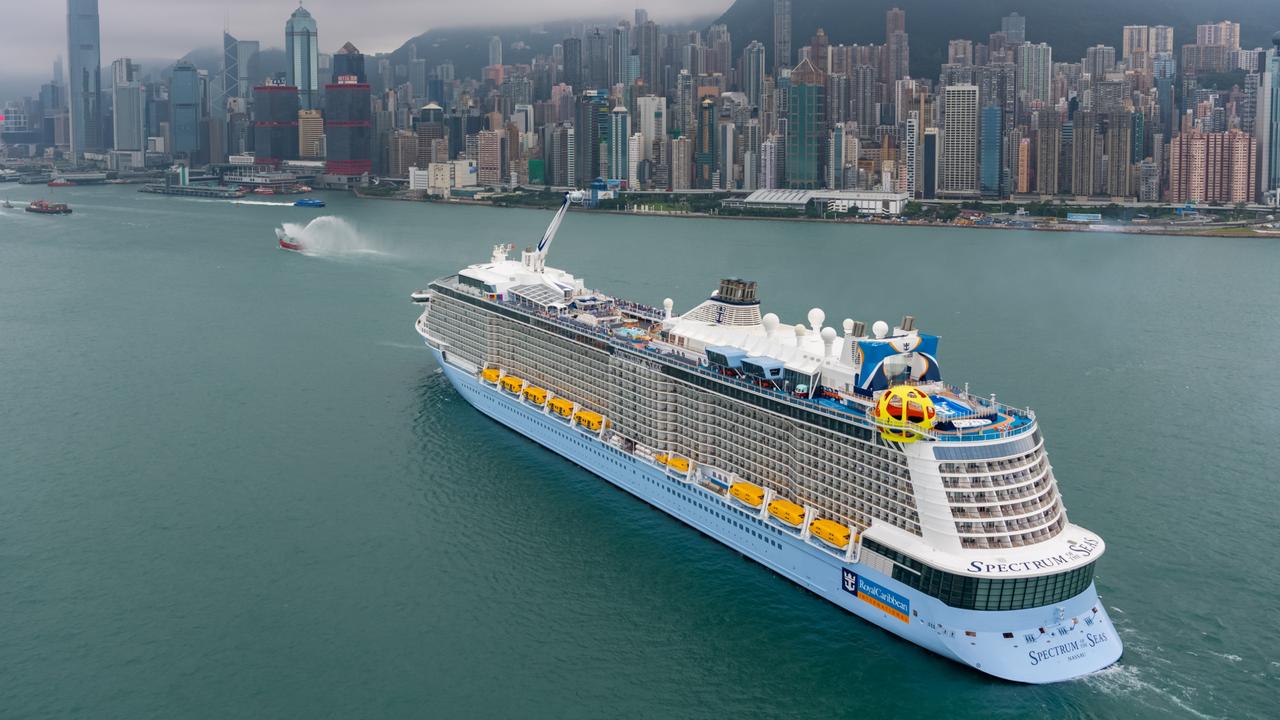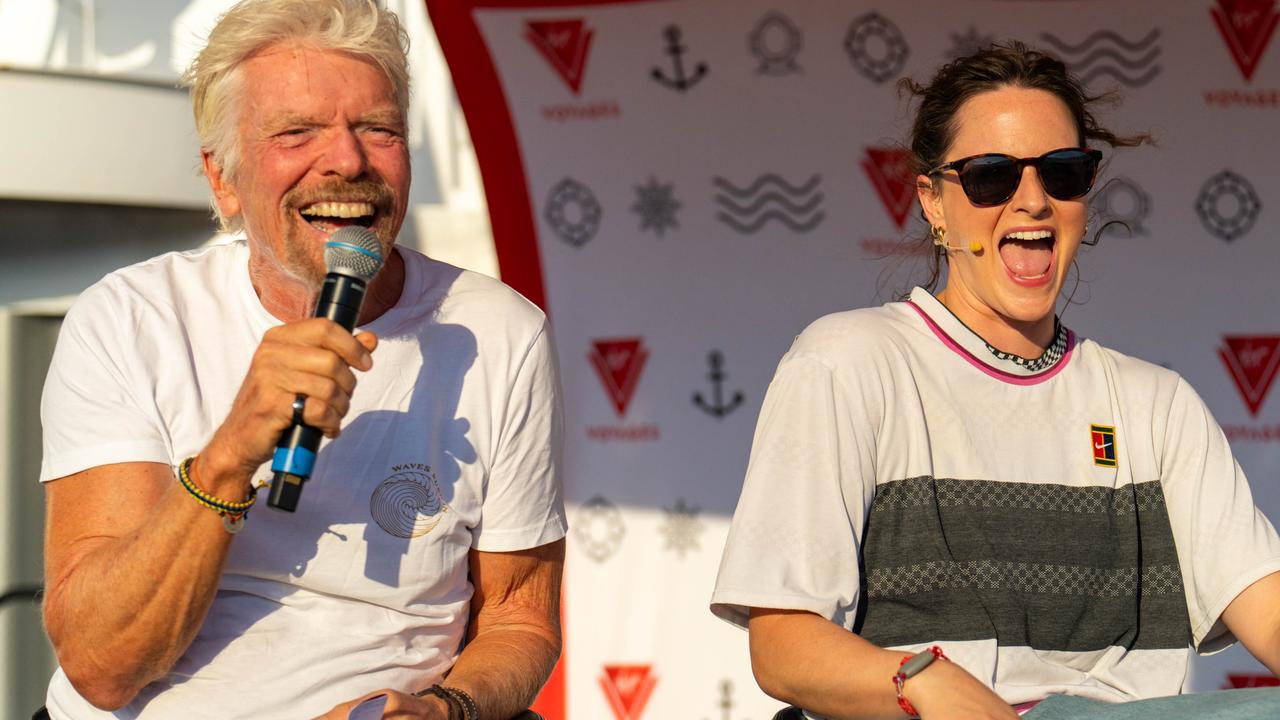Big ships will call Australia home
ISN'T it wonderful to find a place to take a holiday that has not been spoilt by tourism or pollution? It is even better when the place is vast.

JERRY Hall discovers that the wild, pristine and sometimes surprising landscape of the Kimberley is just perfect for a romantic break with her Australian boyfriend.
There is a huge northern stretch of Western Australia that I had been longing to get lost in: the Kimberley.
It has remained pristine, virginal and is one of the most remote places on Earth.
It is also the ideal place for a couple to lavish time and attention on one another to get to know one another just a little bit better. It does not take long to persuade Warwick, my Australian boyfriend, to spend several days with me on board a small luxury liner cruising the region's coastline and estuaries.
Although the Kimberley is only a little part of Australia, it covers an area larger than Germany and is criss-crossed with some of the country's largest rivers, such as the Fitzroy and the Ord. It is a huge area to travel over in a few days but, as Warwick keeps telling me, everything is bigger and better in Australia.
Our boat is called the True North and our journey starts at Talbot Bay, perhaps the best place in the world to see how the Earth's surface has been twisted and contorted. It is a geology lesson brought to stunning life.
Talbot Bay is part of the Buccaneer Archipelago, which is made up of nearly 1000 islands formed from 1.8 billion-year-old sandstone being pushed up. It is also home to the Horizontal Waterfalls two narrow gaps in sandstone ridges that create two spectacular "waterfalls".
We take a tender out to the falls and it is a truly thrilling experience. In the raging currents we hold on tightly; you do not want to fall out in these crocodile-infested waters.
It turns out that it is not just the crocs we should be worrying about. Coming back to True North, we see two large tawny nurse sharks circling the boat.
It is a startling moment we all know there is no such thing as a cuddly shark but one of the onboard biologists, our guides to the unfamiliar and fascinating environment, explains that they are largely dormant during the day and, thankfully, not keen on anything much bigger than shellfish.
The next morning we drop anchor at Montgomery Reef, where our visitors are dozens of turtles. The reef is home to a vast array of marine life, including dugongs, reef sharks, stingrays and birds, as well as the large turtle population, which feeds on the seagrass beds.
They are majestic but I cannot stop looking at the mudskippers. The mudskipper is a fish but spends more time skipping across the mudflats than swimming in the water.
Like all fish, they breathe with gills and absorb oxygen from the water into their blood but, unlike other fish, they spend most of their time out of the water and keep their skin moist by rolling in puddles and wiping their eyes with a wet fin.
We depart True North in tenders again to cruise the river. Passing through deep red gorges we see ripples in the sandstone.
Even in this harsh, dry climate, life is sprouting out of cracks along the steep walls. Boab trees and trailing ferns give us the impression of being in the Hanging Gardens of Babylon. Waterfalls pour from cracks in the rockface; water has been the master sculptor, creating deep grooves stained black against the ochre walls.
The Kimberley landscape is a work of art. While the saltwater croc has its kingdom below the waterline, above it, separated and protected by the high sandstone cliffs, lies the real heart of the Kimberley. There we find the caves that hold Aboriginal rock art.
Here we see the people's lightning god and the water gods in their original home. Although Warwick knows a little more than me about Aboriginal art works, it is just as much a wonderful discovery for him to find out more about them.
When we return to True North, a large crocodile is floating behind the boat just watching and waiting. Warwick has been raised with a healthy and fearful respect for these enormous and deadly creatures and I quickly develop a sense of trepidation, too, always standing clear and well away from the back of the boat, the banks and the water line on beaches.
But at Leadline Creek, Warwick promises me a real outback experience and so we put on our bathers under shorts and hike up the ominously named Crocodile Creek to a hermit's abandoned camp for a refreshing swim in a billabong surrounded by water lilies and butterflies, passing wild passion flowers and boab trees en route.
It is breathtakingly beautiful and romantic and even though walking up wet creeks is slippery and dangerous it is worth it because you can swim where there are no big saltwater crocs. Warwick tells me that there are smaller, freshwater crocs called "freshies", before adding: "But they can't eat you, so not to worry."
I am not quite so sure.
We while away the hot days, going by helicopter to swimming holes at waterfalls and have delicious barbecues. There is an artist aboard, Jacinda, who oversees our sketches of the paperbark trees that surround Melaleuca Falls on each side, giving cool shade over the turquoise water of our sun-dappled swimming pool.
These clean, fertile waters are a fisherman's paradise and Warwick and I catch cod, mangrove jack, fingermark bream, barramundi and shrimp which the chef serves as sushi, smoked fish, a fish curry and fish and rice breakfast porridge, which is delicious.
I caught a reef shark, which put up an exciting fight as I reeled him in. In one tender, five fishermen brought back 35 fish, all of a good size.
On our birdwatching outings we see a flock of sulphur-crested cockatoos. Then, around the next bend, we spot a colony of flying foxes, or female fruit bats, hanging upside down with their bat wings wrapped tightly around their babies. We visit Sale River, Glenelg River, Red Cone Creek, St George Basin and take in some Aboriginal rock art believed to be 33,000 to 50,000 years old.
I would love to say that our stay aboard ship was entirely about the simplicity of spending time together and appreciating the wonders of this quite extraordinary environment. But there were opportunities to dress up, too, and who can resist that? One evening we have a masked cocktail party, a wonderful opportunity to feel glamorous again while we stand on deck and admire the magnificent, blood-red sunset.
And even in the Outback there are places to shop. In the town of Broome, the reminders of the local industry are everywhere. The old colonial houses in which the pearlers lived have been lovingly restored and we stay in one that has been converted into a charming boutique hotel.
At nearby Cable Beach a 22km stretch of white sand and ancient red striated rocks the dunes are covered with bits of broken mother-of-pearl shells glittering in the sun.
Only one in 10,000 will produce a pearl but the Aboriginal people use the shells in jewellery and as art for decorating their wooden carvings. At the local spa, I have a crushed mother-of-pearl body scrub (Warwick opts for a more manly Kodo rock stone massage).
And then there are the pearl stores: Kailis, Paspaley and Linneys. Few things are more sensual to the touch than natural pearls and I was unable to leave without buying a gorgeous necklace. What better memento of my visit, I tell myself and Warwick.
But it is the Aboriginal culture and artworks for which the region is really famous. We fly to Derby, a little more than 200km from Broome, where we meet Donny Woolagoodja, an artist who was chosen to create a 35m-high sculpture of the water spirit Wandjina for the opening ceremony of the Sydney 2000 Olympic Games. He brings the meanings of the art that we have seen completely to life and Warwick and I buy several paintings.
I was thrilled to find one piece of work painted on paperbark using the traditional ochre.
These are the mementos of our visit, but what we take away from our trip to the Kimberley is the slideshow of memories of a spectacular landscape, a rich but neglected Aboriginal culture and the sheer wonder of the Outback.
There are no oil slicks, plastic bags or sewage along this wild, untamed coastline. Warwick and I travelled for 11 days without seeing another boat or house or person.
This is nature as God intended and it is truly awe-inspiring a desert of mangled rocks and red dirt meeting the ocean. You have to see it to remember how majestic the world can be without human beings spoiling it.
Jerry Hall was a guest of Tourism Western Australia (westernaustralia.com)
This story first appeared in The Times.



